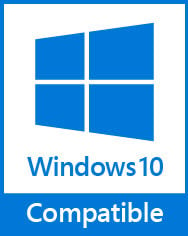
Fix Windows 10 Update Error 0x8007000d – Five Easy Methods
Windows 10 is one of the most popular operating systems that Windows have released. This version promises to allow users to have smooth and easy security updates. Unfortunately, there will be times when users encounter problems such as the Windows 10 Update error code 0x8007000d.
Recommended: To easily install drivers automatically, use the tool below.
The Windows 10 Update Error 0x8007000d happens when an important file is corrupted or missing. As a result, you won’t be able to install the latest updates, which opens up your PC to failures or data security breaches.
Moreover, other potential reasons your PC cannot go through automatic updates exist. In our guide today, we will show you some basic ways to navigate around this error.
Common Reasons for Windows 10 Update Error 0x8007000d
Before delving into the methods to fix the Windows 10 Update Error 0x8007000d, it’s vital to understand the common reasons behind this error. Knowing the causes will help you better diagnose the issue and apply the appropriate solution. Below are some of the most common reasons for encountering the Windows 10 Update Error 0x8007000d:
- Corrupted or missing system files: Windows 10 updates rely on specific files to execute the update process smoothly. If any of these files are missing or corrupted, the update may fail, and you’ll likely encounter the error 0x8007000d.
- Insufficient disk space: Windows 10 updates require a certain amount of free space on your hard drive to install successfully. If your computer lacks sufficient storage, the update may not proceed, resulting in error 0x8007000d.
- Network issues: A stable internet connection is crucial for downloading and installing updates. If you’re experiencing connectivity problems or if the update servers are down, you may run into error 0x8007000d during the update process.
- Antivirus interference: Some antivirus software may conflict with the Windows 10 update process, causing error 0x8007000d to appear. Disabling or temporarily uninstalling the antivirus program might resolve the issue.
- Incorrect or damaged update files: Sometimes, the Windows Update tool downloads incorrect or damaged files, which can lead to error 0x8007000d. In such cases, using the Deployment Image Servicing and Management (DISM) tool can help fix the problem.
By understanding these common reasons for the Windows 10 Update Error 0x8007000d, you can better pinpoint the root cause of the issue and apply the appropriate method to fix it. In case none of the methods mentioned in the article prove successful, you may need to seek additional help or explore more advanced troubleshooting techniques.
First Method – Utilize the Windows Update Troubleshooter Tool
- Press the “Windows” key on your keyboard and press “R.” This will open a small window where you can type “control update” in the run command window.

- When a new window opens, click “Troubleshoot” and “Additional Troubleshooters.”

- Next, click “Windows Update” and “Run the Troubleshooter.”

- At this point, the troubleshooter will automatically scan and fix errors in your PC. Once done, you can reboot and check if you are experiencing the same error.

Second Method – Restart the Windows Update Services to Windows 10 Update Error 0x8007000d
Another possible reason you may be experiencing error code 0x8007000d is when your Windows Update Services are acting up. You can quickly fix this by forcing a restart of this utility.
- Press the “Windows” key on your keyboard and then press “R.” Type in “CMD” in the small window pop-up. To grant administrator access, press the “shift + ctrl + enter” keys.

- You will next see the command prompt. You need to enter a series of commands one by one. Press “enter” after each command you type to stop the running services.
- net stop wuauserv
- net stop cryptSvc
- net stop bits
- net stop msiserver

- Once the services stop, you can restart by entering the following commands one at a time.
- net start wuauserv
- net start cryptSvc
- net start bits
- net start msiserver

- Exit the command prompt, then reboot your PC.
- Restart your Windows Update Services to see if the Windows error code 0x8007000d persists.
Recommended: Fortect System Repair Tool – Fix Errors & Speed Up Windows Automatically
Third Method – Utilize the Windows SFC (System File Checker)
All Windows 10 computers also come with a built-utility called the System File Checker (SFC). You can use this feature to scan and repair any issues that may be causing Windows 10 Update Error 0x8007000d.
- Press the “Windows” key and simultaneously press “R.” A small window will pop up where you can type “cmd.” To grant administrator access, press the “shift + ctrl + enter” keys.

- This process will open up the command prompt. Type “SFC/scannow” in this new window and press enter.

- The System File Checker will now commence scanning and repairing your PC. You’ll need to restart your computer when done. Next, run the Windows Update tool to check if the issue has been fixed.
Fourth Method – Use the Deployment Image Servicing and Management (DISM)
You may experience Windows 10 Update Error 0x8007000d when your Update tool downloads the wrong or corrupted files. To run the DISM, follow these steps:
- Press the “windows” key and then press “R.” A small window will appear where you can type “CMD.”

- The command prompt window will open, type in “DISM.exe /Online /Cleanup-image /Restorehealth” and then press “enter.”

- DISM utility will start scanning and fixing any errors. Once completed, restart your PC. Run the Windows Update Services tool to see if the error persists.
Fifth Method – Run a Disk Cleanup
Are you stuck with the same error? You can try this fix too! Windows updates can fail if the storage in your PC is almost full. You can delete unimportant files or run a Disk Cleanup to make space for updates.
- Hold the “Windows” key and press the letter “R” simultaneously. This will open a small window where you can type “cleanmgr” and press enter.

- This will open the Disk Cleanup window. Typically, drive C is selected by default. Click “OK” and put a checkmark on “Temporary Files, Temporary Internet Files, and Thumbnails.” Click “OK” to initiate the cleanup.

Final Thoughts
Overall, these five easy methods should be enough to fix most instances of the error 0x8007000d in Windows. Whether you try resetting the Windows Update components, running the System File Checker, or using the Windows Update Troubleshooter, you should be able to find a solution that works for you.
If none of these methods resolve the issue, you may seek additional help or try more advanced troubleshooting techniques. Whatever method you choose, the important thing is to keep trying until you find a solution that works for you.

- Your machine is currently running Windows 10
- Fortect is compatible with your operating system.
Recommended: To repair Windows Errors, use this software package; Fortect System Repair. This repair tool has been proven to identify and fix these errors and other Windows problems with very high efficiency.

- 100% safe as confirmed by Norton.
- Only your system and hardware are evaluated.
Error 0x8007000d Frequently Asked Questions
How to reset Windows update components?
To reset the Windows Update components:
Press the Windows key + X and select “Command Prompt (Admin).”
Type the following commands, pressing Enter after each one:
net stop wuauserv
net stop cryptSvc
net stop bits
net stop msiserver
ren C:\Windows\SoftwareDistribution SoftwareDistribution.old
ren C:\Windows\System32\catroot2 catroot2.old
net start wuauserv
net start cryptSvc
net start bits
net start msiserver
Close the Command Prompt and try updating Windows again.
Resetting the Windows Update components can often resolve issues with updates failing to install or other problems with the update process. By stopping the relevant services and renaming the SoftwareDistribution and catroot2 folders, you can reset the update process and start fresh, which may help fix any problems preventing updates from installing correctly. Remember that this process may also delete any pending updates, so you may need to download and install them again after resetting the components.
What is the Windows update assistant?
The Update Assistant is a tool provided by Microsoft that allows users to upgrade to the latest version of Windows 10, even if their current system is not eligible for the upgrade through Windows Update. It can be downloaded from the Microsoft website and run on any compatible device to check for and install the latest version of Windows 10. It is primarily intended for use in cases where the user’s device is no longer receiving updates through the normal update process or the user wants to upgrade to a newer version of Windows 10 that is unavailable through Windows Update.
How to enable program compatibility troubleshooter in Windows 10?
To enable the Troubleshooter in Windows 10:
Press the Windows key + S and type “troubleshoot.”
Select “Troubleshoot” from the search results.
In the left pane, scroll down and click “Program Compatibility Troubleshooter.”
Click “Run the troubleshooter” and follow the prompts to enable the Program Compatibility Troubleshooter.
Why do I see error code 0x8007000d during Windows updates?
Error code 0x8007000d can occur during Windows updates for a variety of reasons. Some potential causes of this error include:
Corrupted or missing system files: If the files needed to install the update are missing or corrupted, you may see the error code 0x8007000d.
Insufficient disk space: If there is not enough free space on your hard drive to install the update, you may see this error.
Network issues: You may see the error message if there are problems with your internet connection or the updated servers.
Antivirus software: Some antivirus programs can interfere with the update process and cause this error.
To fix error code 0x8007000d, you may need to try various troubleshooting techniques, such as resetting the Windows Update components, running the System File Checker, or using the Windows Update Troubleshooter. If none of these methods resolve the issue, you may seek additional help or try more advanced troubleshooting techniques.




